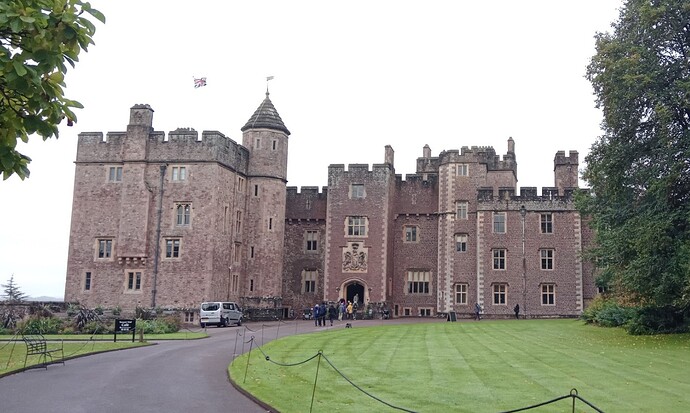Well, as Armorama members may have noted, I’ve been proceeding quite quickly (for me) on my Object 450/T-74 project; for once I was actually in the modelling groove. However, (there’s always an however) my Zero Alpha decided we needed a 4 day break. So that was it, and now you know why it’s all been quiet on the western – well – south-western front.
So it was that after a mere 2 hour drive we found ourselves in a sodden Somerset – a neighbouring county hence the relatively short distance.
To be honest, nothing of much military or historical interest to report so as I said, this is really an apologia for my absence and lack of modelling progress. However, - I did say there’s always an “however” we did visit Dunstan Castle – which although was converted relatively early on in its life from a fortification to a residence/palace was not uninteresting. Oh, I did describe Somerset – or at least this part of it – as sodden; well, it rained every and most of the day.
Moving on from the Middle Ages, at a nearby beach I did discover this pillbox, which rather curiously, was covered in the same stones as formed the misnamed beach. It does nothing to disguise that it is in fact, a pillbox, as one can see. I wonder what the military powers were thinking of back in 1940 or thereabouts?
Despite the torrential rain, we still exercised our dog ,Wren, and ourselves, which sort of sucked the fun out of a fair bit; however, (again) during one of our meandering drives I came across this sign at a small village and couldn’t help but insist on a photo:
(note that the rain had briefly ceased on such a holy undertaking!)
I mean, what the hell? A modicum of Googling by my wife amidst the pouring rain gave extensive descriptions of the so-called “twinning” (which I’ve always considered slightly absurd) but no clue as to “why”. Despite my curiosity, and also having trod the pavé of Villers Bocage twice (I have truly been so lucky in my military career), in the end I gave up. Perhaps the rain just got to me.
Well, all too brief an interlude perhaps, but now, back to the bench!








